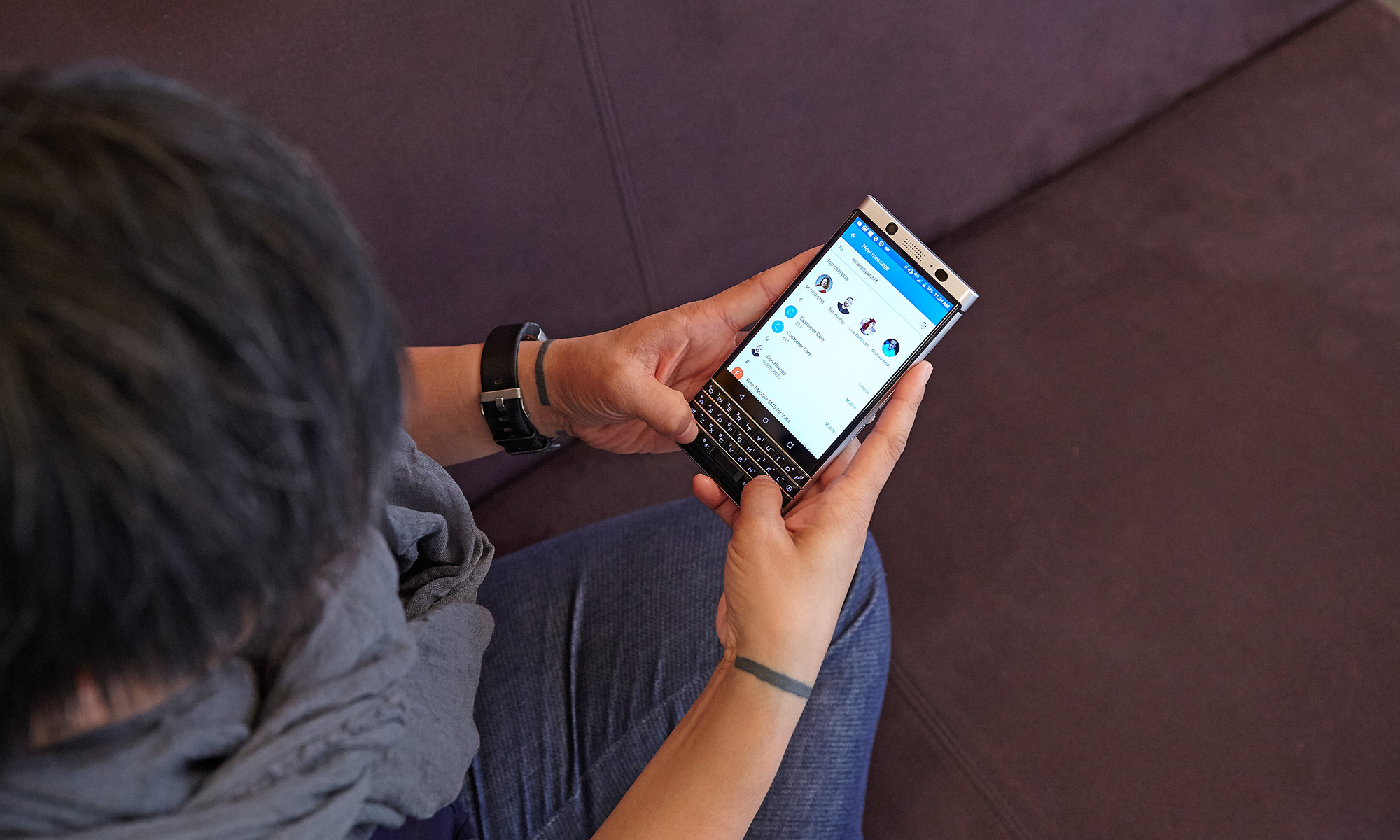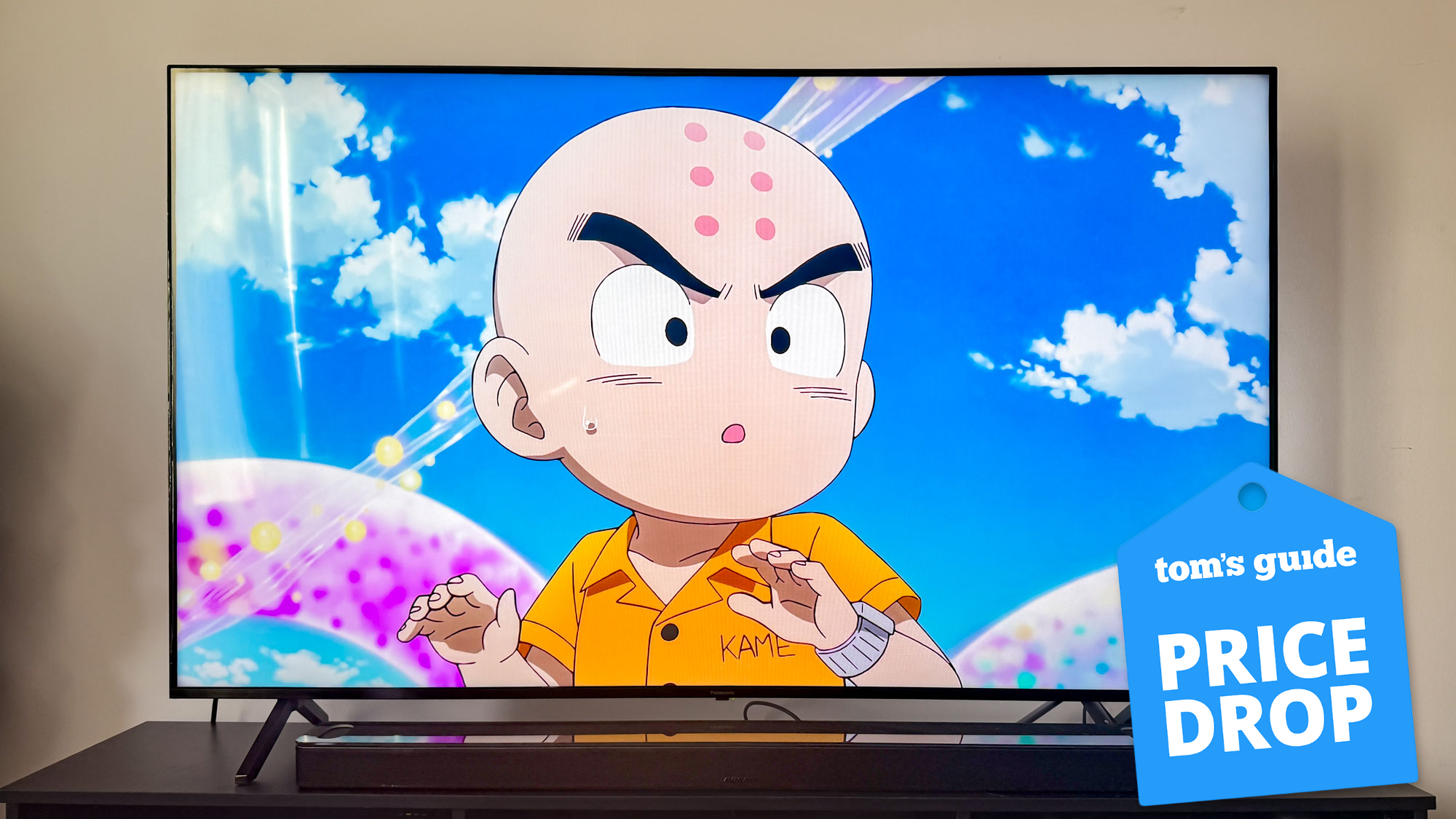Tom's Guide Verdict
BlackBerry may never rule the smartphone world again, but this TCL-built phone is a very good device, thanks to a multipurpose keyboard and a monster battery.
Pros
- +
Physical keyboard allows for programmable shortcuts
- +
Outstanding battery life
- +
Useful BlackBerry software
- +
Bright display
Cons
- -
Middling performance
- -
4.5-inch screen feels cramped on some tasks
Why you can trust Tom's Guide
Let's be blunt: We will never return to BlackBerry's glory days, when phones stamped with that company's logo ruled the mobile world. But that doesn't mean that BlackBerry has to settle for being a distant also-ran in a world dominated by phones from Apple and Samsung. TCL now makes phones under the BlackBerry banner, using that company's security-focused software and branding on an Android device. And with the $549 BlackBerry KeyOne, TCL has produced a phone that will remind you of BlackBerry's glory days.
The KeyOne blends a very powerful physical keyboard with an all-day battery in a phone that a lot of productivity addicts will be happy to use, both around the office and at home. The processor inside the KeyOne feels a little underpowered and that price tag seems steep, but this is a phone that ultimately helps you get the job done.
Updated March 2:
• A new model of the BlackBerry KeyOne, the Black Edition, is now up for sale in the U.S. through Amazon and Best Buy. The KeyOne Black Edition retails for $549 and features 4GB of RAM and 64GB of storage, compared to the 3GB and 32GB in the standard KeyOne, respectively. The Black Edition was previously sold internationally late last summer, but is only now being offered stateside.
Design: Keyboard Takes Center Stage
TCL has packed a lot of phone around a fairly minimal screen. The KeyOne has a 5.87 x 2.85 x 0.37-inch frame, which is roughly the same height and width as the 5.86 x 2.83 x 0.31-inch LG G6, though the BlackBerry device is a little bit thicker. Even though these two phones are essentially the same size, the G6 hosts an expansive 5.7-inch display; the KeyOne, in contrast, offers a noticeably more compact 4.5-inch screen. The reason, of course, is the physical keyboard on the KeyOne — more on that feature in a moment — which takes up an area on the front of the phone that's normally dedicated to extra screen space.
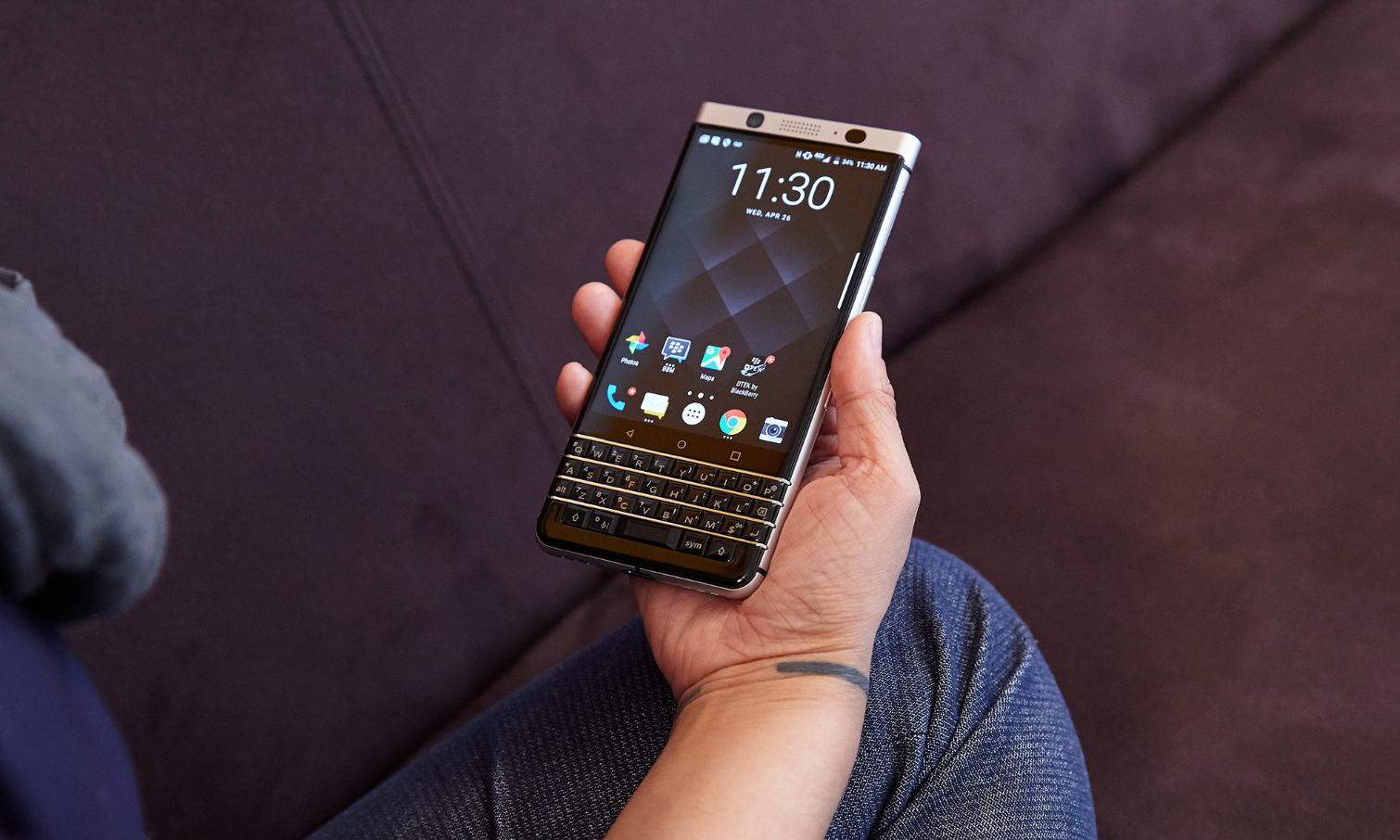
TCL argues that you actually get a lot more usable screen space with its phone than you would with a conventional 5.5-inch screen, since there's no virtual keyboard occupying precious real estate. When you use apps for browsing, chat and surfing the web, that's certainly true, though on other apps that benefit from a larger screen — Netflix or YouTube, for example — you certainly feel the pinch.
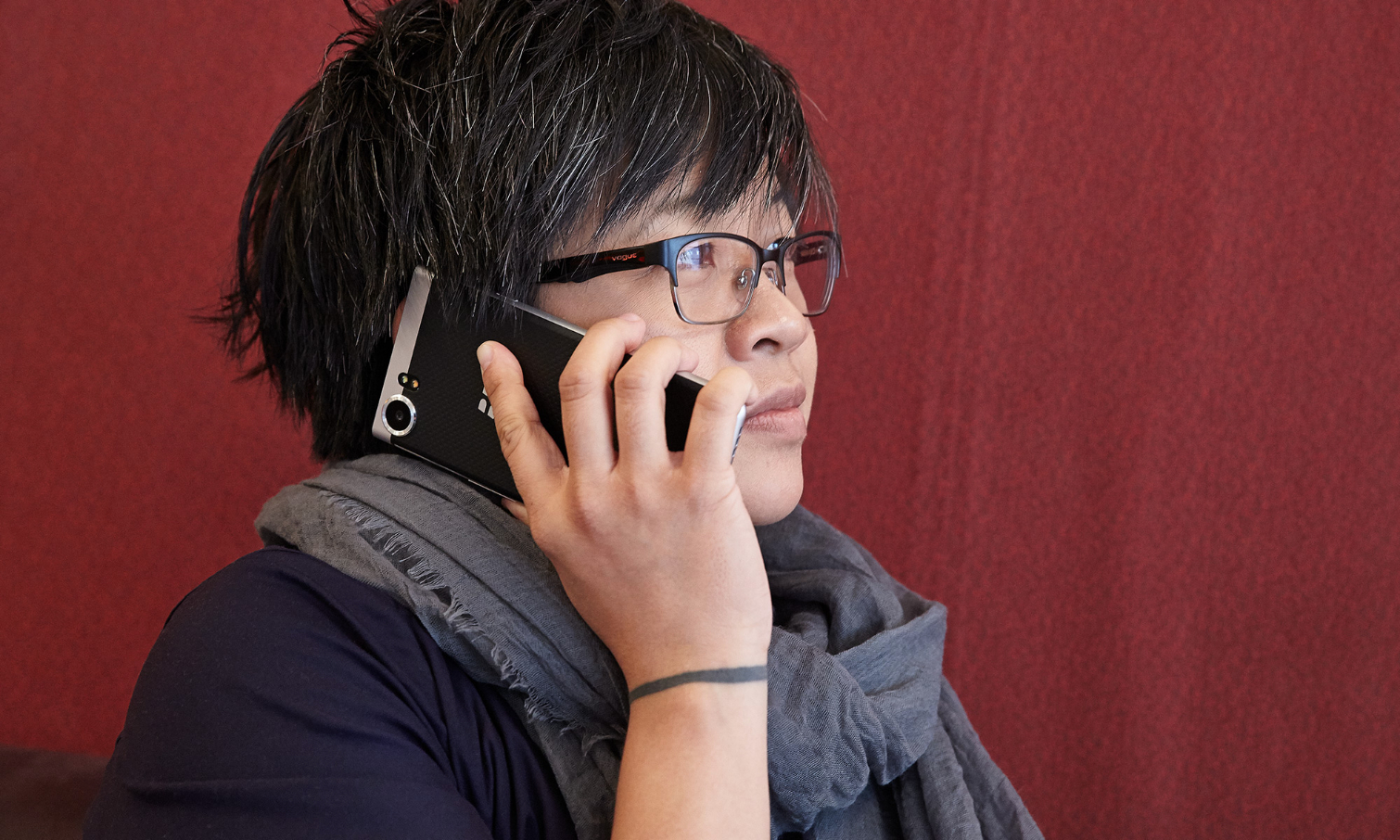

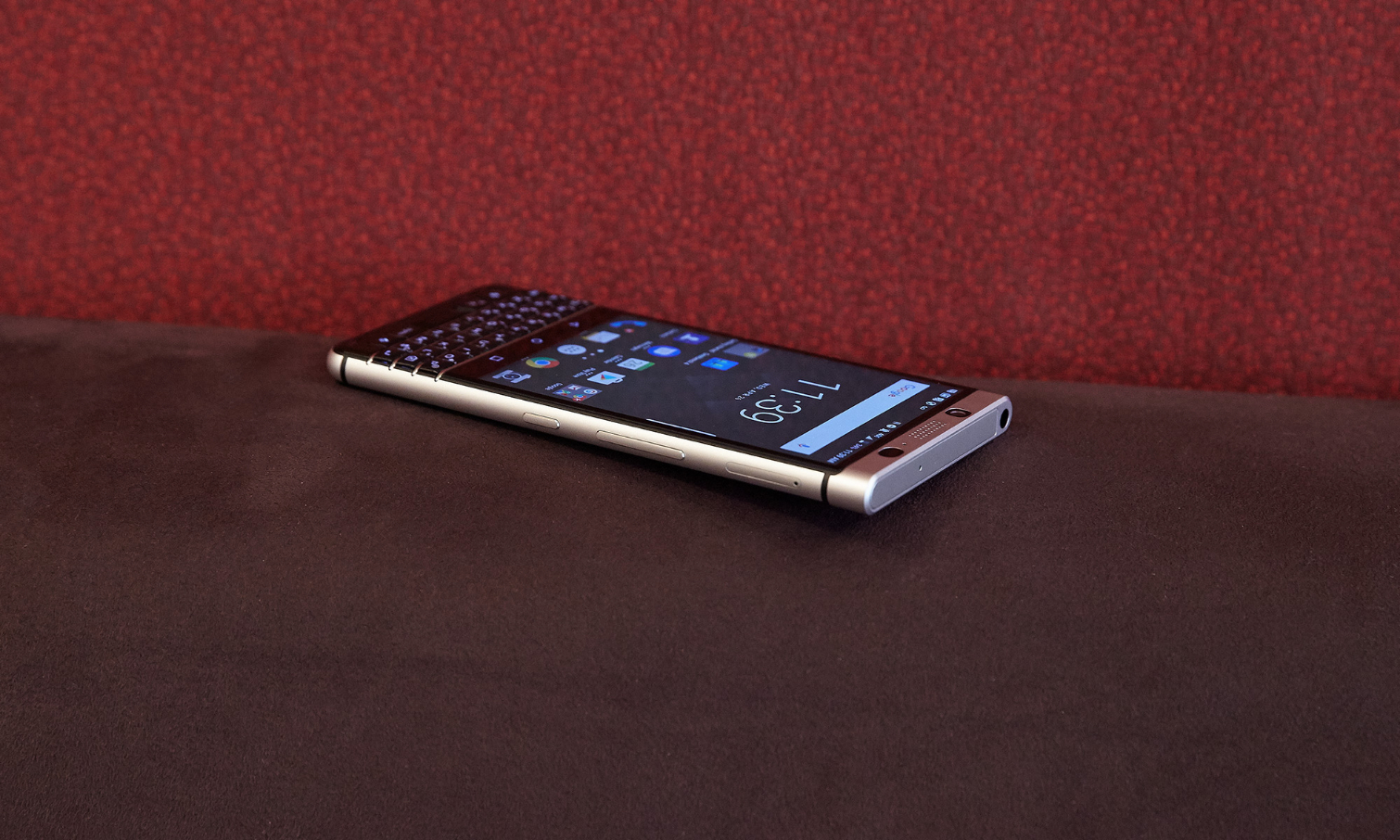
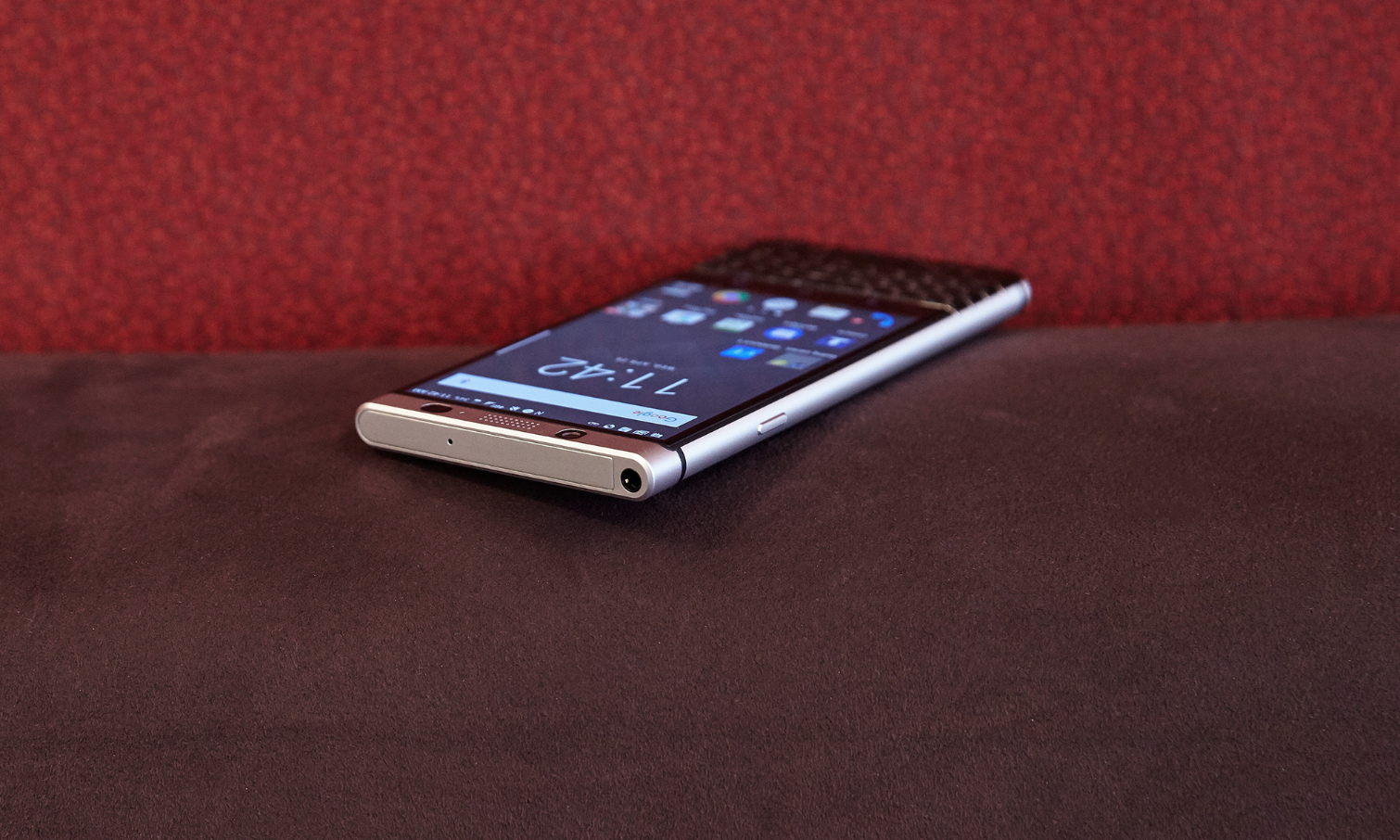
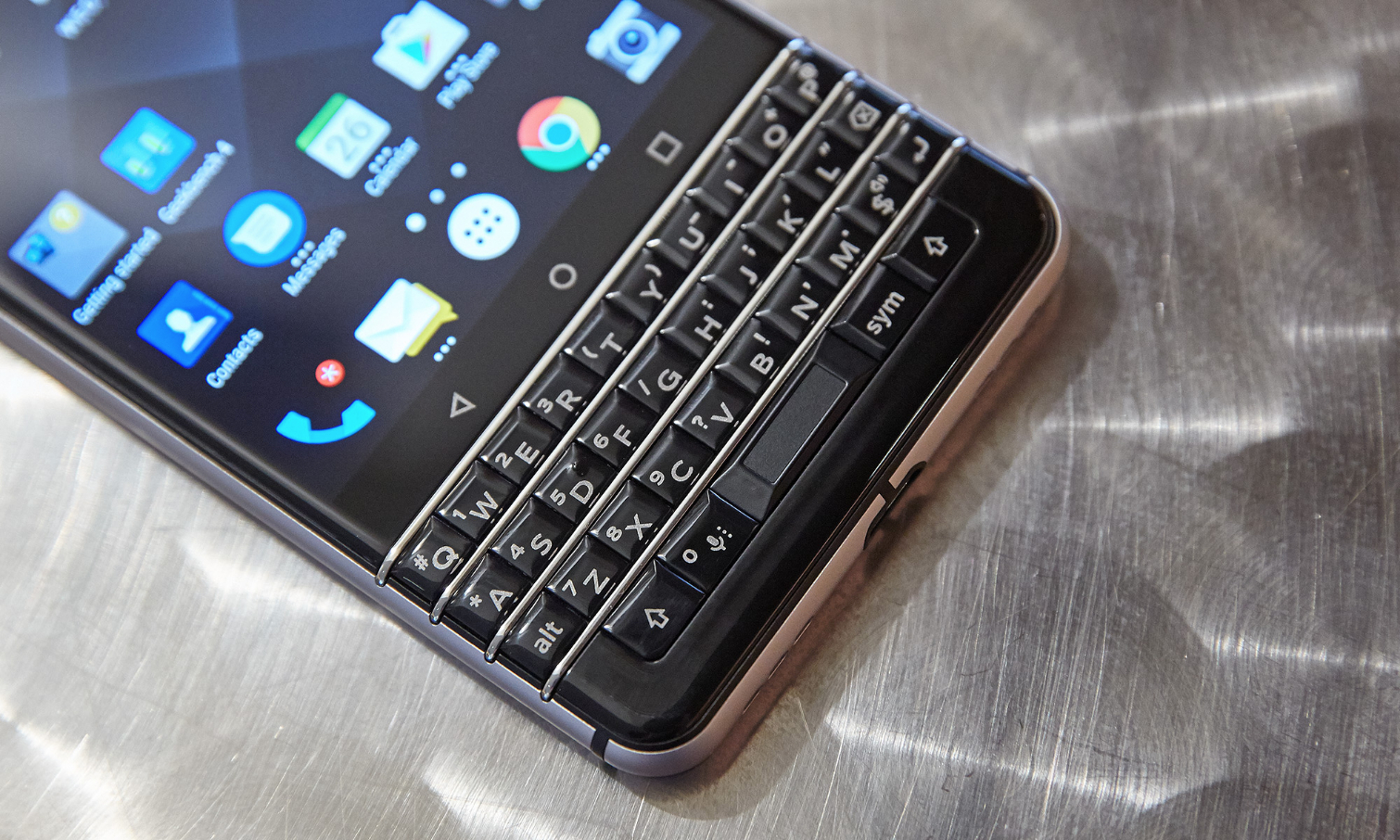

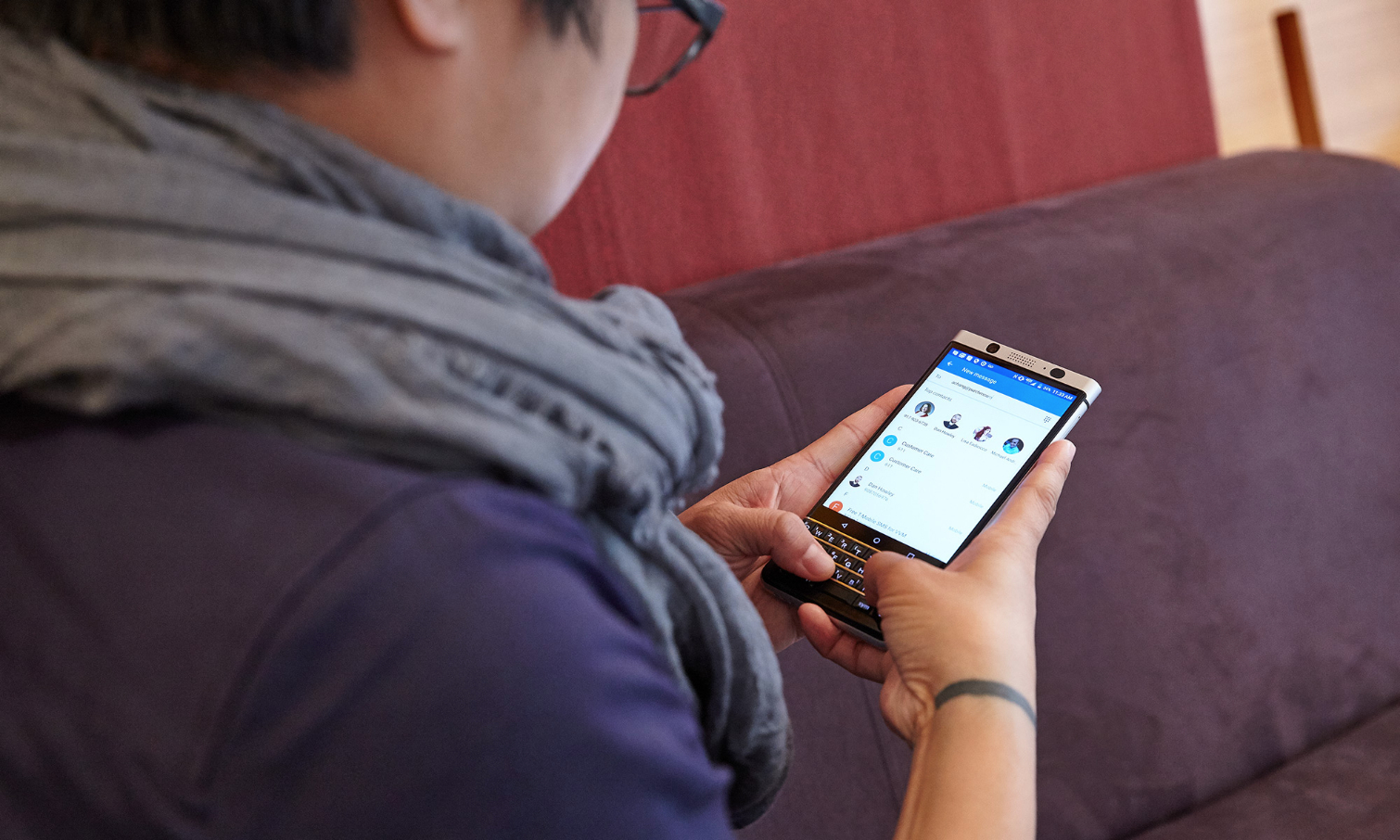
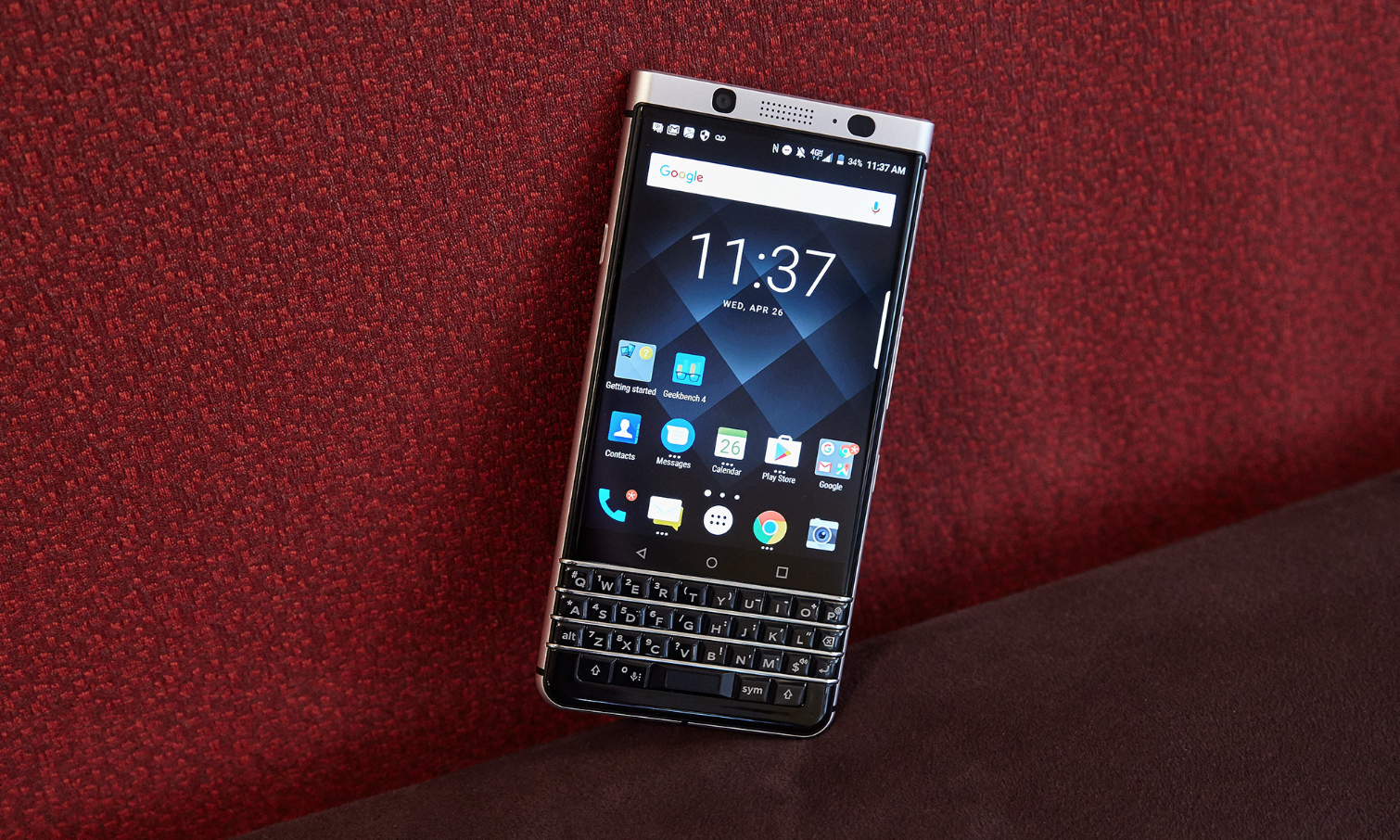
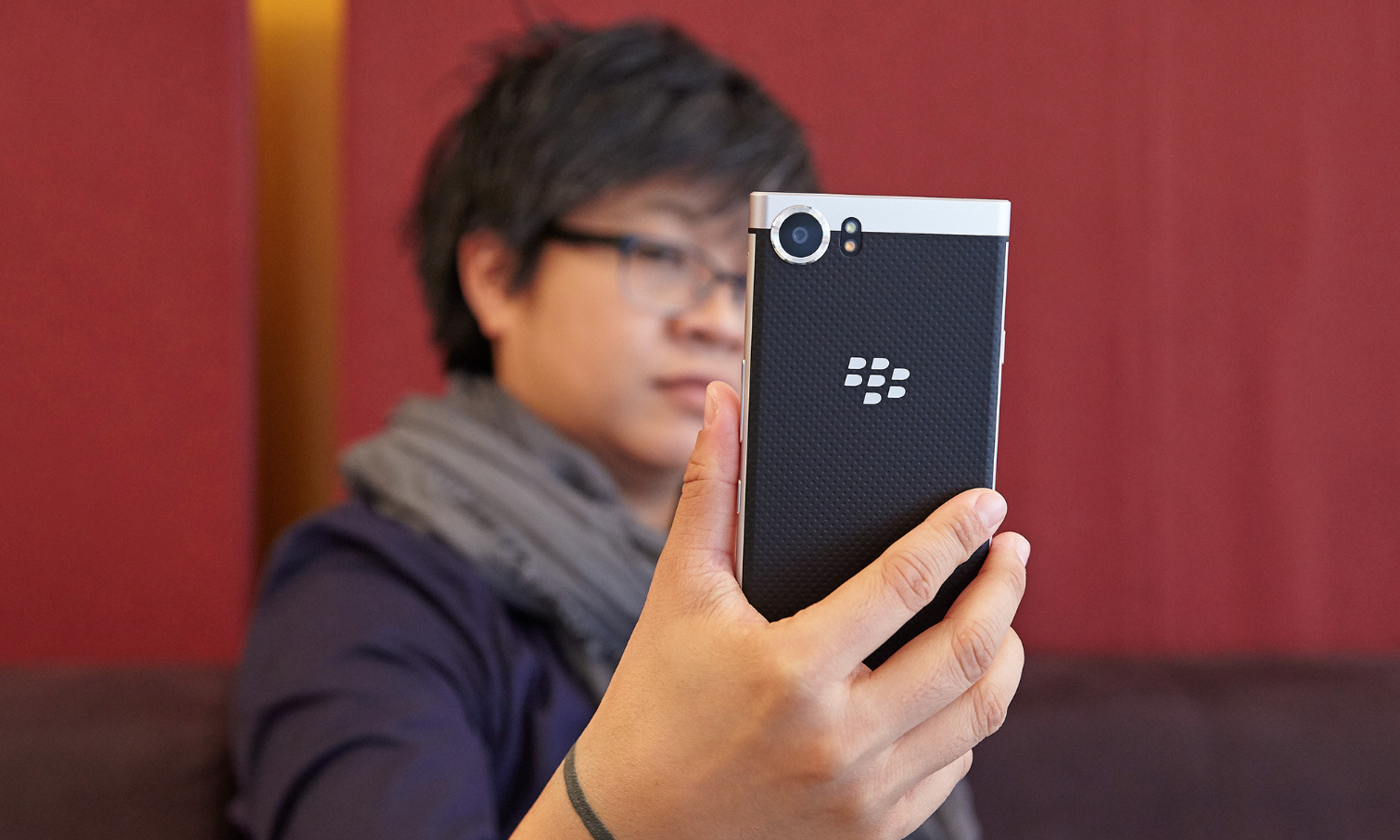

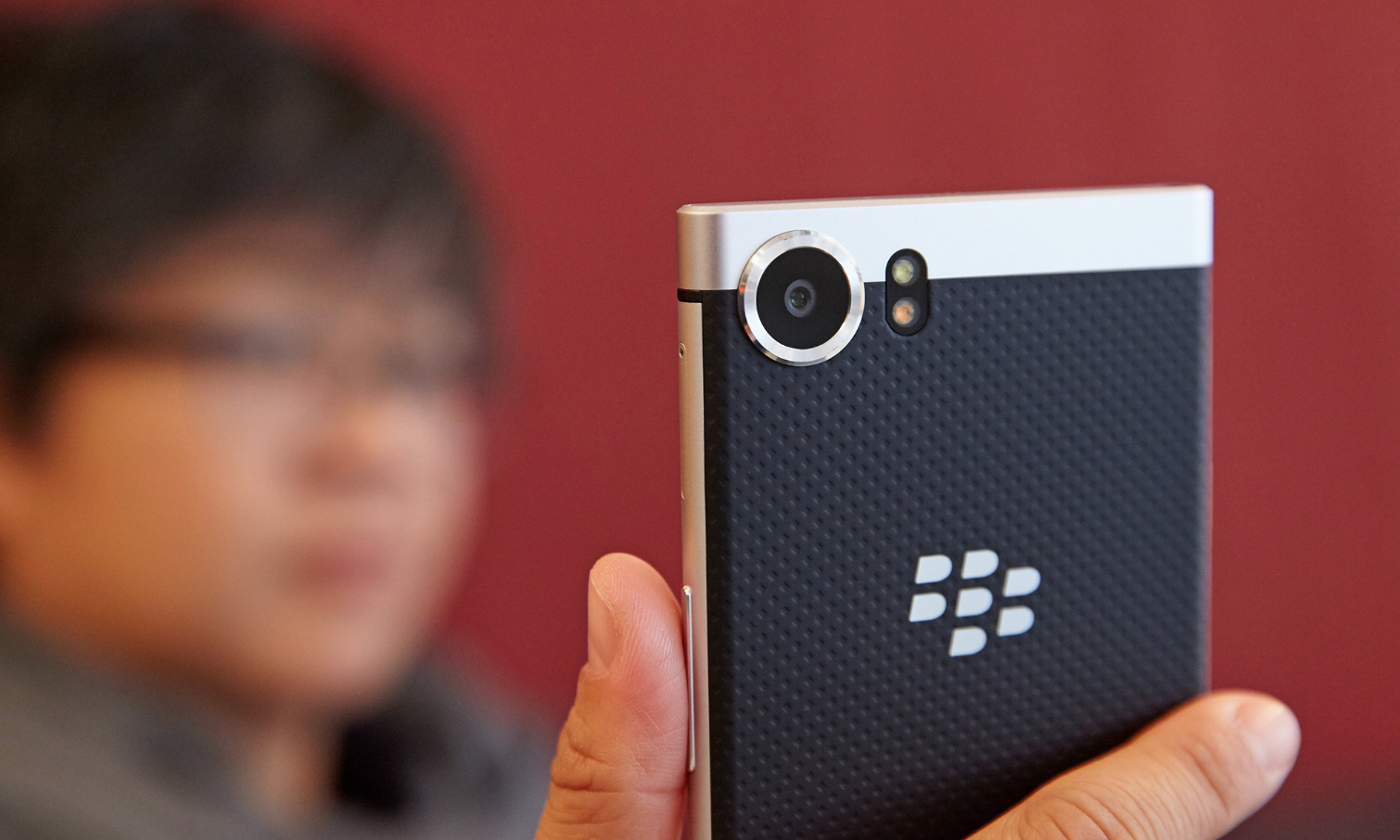
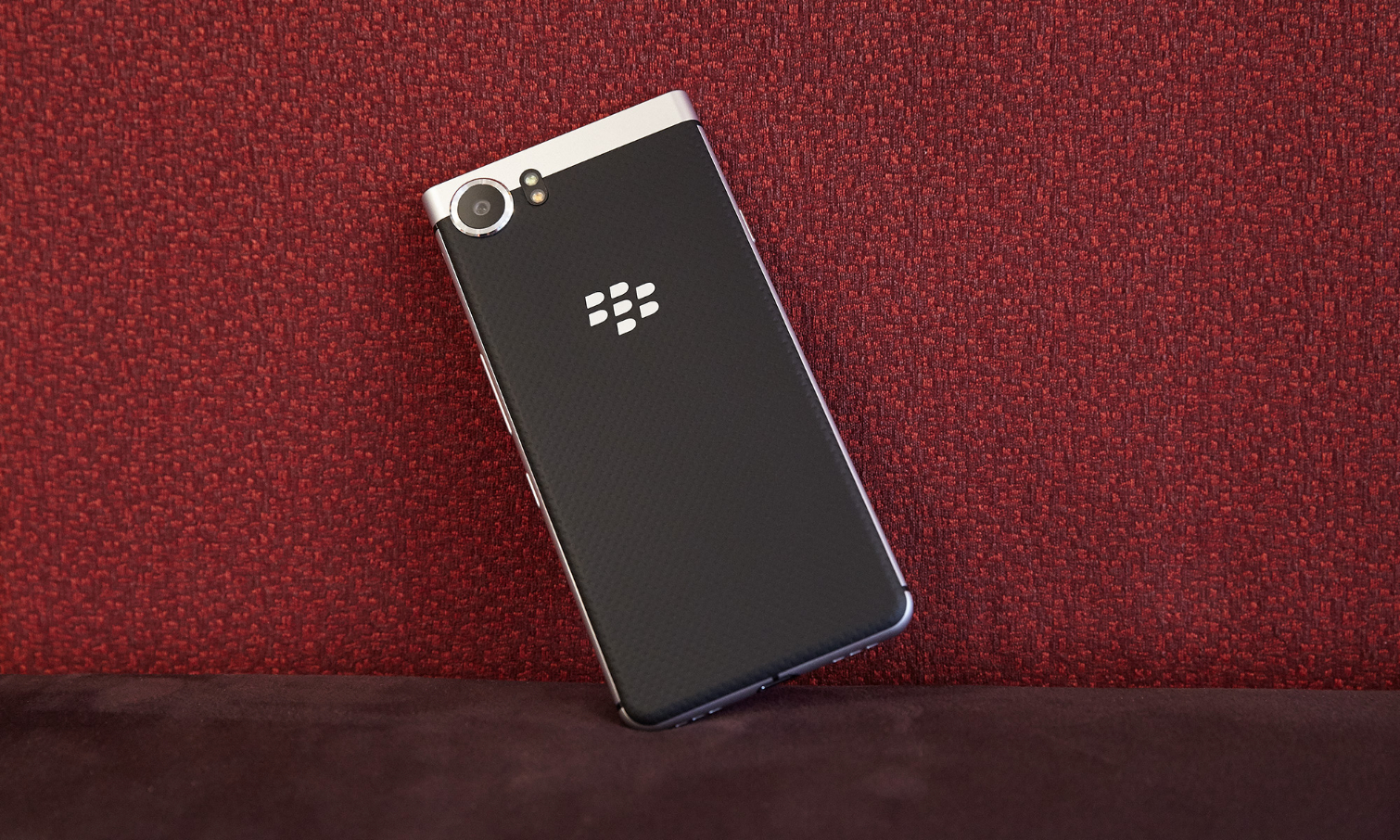
Another thing you'll feel with the BlackBerry KeyOne is a noticeable heft. The phone tips the scales at 6.3 ounces, which is heavier than the 5.75-ounce G6, as well as the Google Pixel XL (5.9 ounces), and both the Galaxy S8 and S8+ from Samsung (5.5 and 6.1 ounces, respectively). Professionals drawn to the BlackBerry name, though, are unlikely to mind the KeyOne's extra heft; it's the result of a sturdy design featuring an anodized aluminum frame, and a textured back that makes the phone easier to grip.

Just below the volume rocker on the KeyOne's right side, you'll find a programmable convenience key, which you can set to perform specific actions. I've got mine set to fire up the phone's camera, though other potential shortcuts include composing a text message or email, adding a calendar event or speed-dialing a specific contact.
Get instant access to breaking news, the hottest reviews, great deals and helpful tips.
Keyboard: Hidden Powers
As you'd expect from a phone carrying the BlackBerry name, the KeyOne sports a physical QWERTY keyboard; the letter keys also host numbers and punctuation, which you access by holding down the ALT key. I've spent the past decade with virtual keyboards, so typing on the KeyOne took a little adjustment, but BlackBerry devotees will likely take to it like ducks to water.

The KeyOne would be a pretty dull phone, though, if all its keyboard did was type. TCL has built several helpful capabilities into the keyboard, making it easily the best feature on this phone.
Start with the space bar, which doubles as a fingerprint sensor. When I started using the KeyOne, I doubted that a slender little sliver of a key could get an accurate read of my fingerprint, but in practice, the sensor on this BlackBerry phone is about as accurate as the one on my iPhone — most of the time it works, except for when my finger is damp.
The keyboard also doubles as a trackpad, which doesn't sound like a big deal until you scroll through an article or a lengthy email without ever moving your finger onto the display. I find it's a great way to keep the KeyOne's screen free of smudges.

The keyboard's standout feature, though, is its support for shortcuts. Each letter key can be programmed with two shortcuts — one for a long press and another for a short one, so you've got 52 potential shortcuts at your fingertips. It's a handy way to quickly launch a commonly used app without having to search for it on your home screen or app drawer. TCL preassigned some shortcuts, which I wish it had left up to users. At least it's easy to edit which key launches which app, so that you can program the C key to launch Chrome instead of having to use the B key.
MORE: Smartphone Buying Guide: 9 Tips for Finding the Right Phone
Display and Audio: Bright but Cramped
At a time when LG and Samsung are stretching their displays from the top of the phone to the bottom, it feels a little odd to go back to a phone hemmed in by a keyboard, but that's what you get when you sign on with a BlackBerry phone. As TCL says, the 4.5-inch display offers plenty of room for composing emails or reading articles, precisely because there's no on-screen keyboard sucking up space. Things feel a little bit more constrained when you're watching a video, though, particularly when you've flipped the phone horizontally and there's a physical keyboard framing Rey's adventures in the latest Star Wars trailer.
The Star Wars: The Last Jedi trailer didn't exactly pop off the KeyOne’s modest 1620 x 1080 screen, and viewing angles were pretty minimal. At least colors look good, whether it's the bright orange of Poe Dameron's flight suit or the emerald hue of Gamora in Guardians of the Galaxy, Vol. 2.

Thanks to that LCD screen, the KeyOne does a solid though unspectacular job of reproducing 134 percent of the sRGB color gamut. That's good, but no match for an AMOLED panel like the one on the Galaxy S8 or Pixel XL, which clock in at 183 percent and 191 percent, respectively. At least the colors that the KeyOne displays are accurate: The BlackBerry phone recorded a Delta-E score of 0.78. That's almost as good as the S8's 0.28 score and much better than the 5.88 score of the Pixel XL. (Numbers closer to zero are better.)
For most would-be KeyOne owners, though, the most important thing about this screen is its brightness, since they'll be using the phone everywhere, from the harsh lighting of a cubicle farm to the bright sunshine of the great outdoors. The KeyOne is up to the task, measuring 574 nits on a light meter. That's ahead of the LG G6, which was no slouch at 557 nits, and miles in front of the Pixel XL and its 396-nit score. I never had any problem seeing details on the KeyOne's display, though there's a modest amount of glare when you use the phone in direct sunlight.

The KeyOne has one speaker at the bottom of the phone, but it makes the most of that sound. Audio was crisp and loud, and I never had to crank up the volume to hear the barbed dialogue on an episode of Archer I streamed over Netflix or the strains of that familiar Star Wars score during The Last Jedi trailer.
Software: BlackBerry Asserts Itself
Other than the keyboard, the thing that makes the KeyOne a BlackBerry phone is its included software. The phone ships with Android Nougat, but there are some distinctly BlackBerry touches here that are likely to appeal to longtime fans. (In fact, one could argue that there's probably a little too much software on this phone: I counted 45 apps included on the device.)

BlackBerry's focus on security means the KeyOne includes the company's Dtek app. This app monitors the security of your device, giving you an overall rating and walking you through how to ratchet up your phone's security. Dtek also monitors which apps are accessing which permissions, even allowing you to set alerts if an app tries to do something like access your contacts or turn on the phone's microphone.
I think BlackBerry Hub may be the most helpful app, though. It combines all your communications — email, texts, social network activity — into one area, making it easy for you to check in on things all at once. I certainly appreciate being able to look at Twitter interactions and Gmail messages without having to jump between apps.
MORE: Best Android-Only Apps You Can't Find on iPhone
Performance: No Powerhouse
The BlackBerry KeyOne is powered by the Qualcomm Snapdragon 625, a midtier mobile processor. Just to put "midtier" in context, that's the same CPU powering the Moto G5 Plus, a budget phone that costs more than $300 less than the KeyOne. TCL reasons that people using the KeyOne are primarily looking for a communications device and not one for mobile gaming or other processor-intensive activities. Still, it's a little surprising to see a $500-plus phone without a more powerful CPU.

That said, the KeyOne does well at handling the tasks you're likely to use if for. I never noticed a lag when I opened apps, and I was able to stream videos from Netflix without any performance lag. The KeyOne may not be built with gaming in mind, but I was able to play Modern Combat 5 without any lags or stutters. (Using the on-screen controls to rain death upon my enemy was a bit more challenging, but that's more a reflection of the KeyOne's 4.5-inch screen.)
We couldn't run GeekBench 4 on the KeyOne, due to a compatibility issue between the app and the phone. (We'll update this story with our test results once the phone's able to run GeekBench.) On the Jetstream 1.1 Javascript test of web browsing, the KeyOne scored a 28.3, just behind the Moto G5 Plus' 30.3 score. As you'd imagine, phones with more powerful processors like the Snapdragon 821-powered LG G6 (56.2) and the Snapdragon 835-powered Galaxy S8 (70.3) dusted the KeyOne.
While TCL doesn't promote the KeyOne as a gaming device, we still ran 3DMark's Ice Storm Unlimited graphics test. The BlackBerry phone tallied a score of 13,750, which was behind the smartphone average of 17,586, but in line with the Moto G5 Plus' 13,862 score.

Camera: An Adequate Shooter
You likely aren't turning to a BlackBerry phone because you prize its camera capabilities above all else, but at least TCL has included a capable shooter on the KeyOne. The phone features a 12-megapixel rear camera with 1.55-micron pixels and an f/2.0 aperture, and I was generally pleased with the shots it captured.
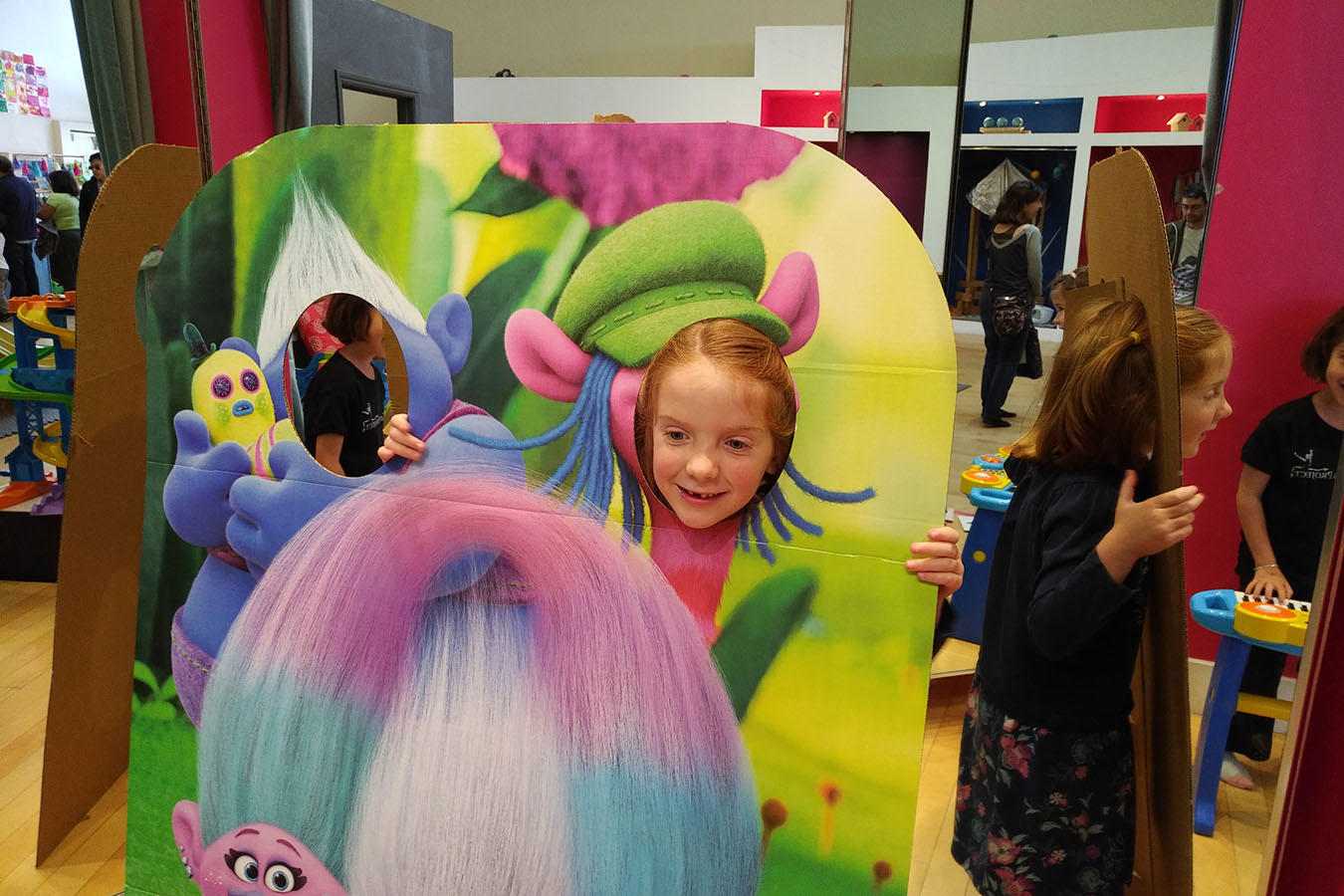
A photo of my daughter at a friend's birthday party managed to accurately reflect all the colors of a pretty busy play area, and I liked the sharp focus on my daughter's face. But the KeyOne's camera can be hit or miss — another photo shot at the same party, but in a darker play area, loses some of that sharpness. My daughter's hair doesn't stand out as vividly, and the plastic banana she's waving around is an indistinct blur.
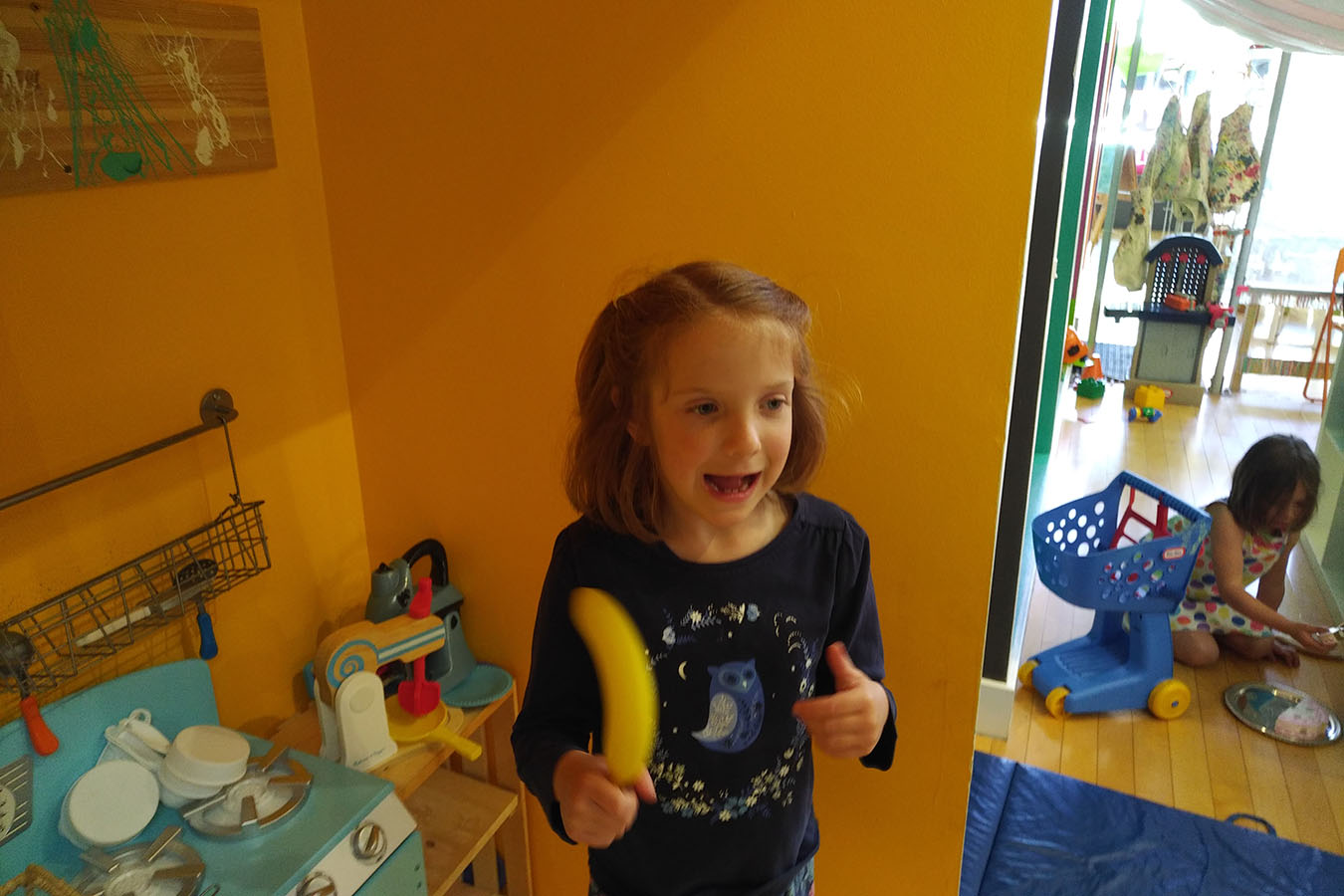
To see how the KeyOne's camera compares to other smartphones, I compared shots it took to ones captured by a Galaxy S7. (Yes, that phone came out a year ago, but it's still an outstanding camera phone, and the Galaxy S8 essentially uses the same camera.) A shot of an early evening libation came out a little dark on both cameras, but the S7 captured a little more detail, like the chips in the glass and individual bubbles in the ice cubes floating in my drink.
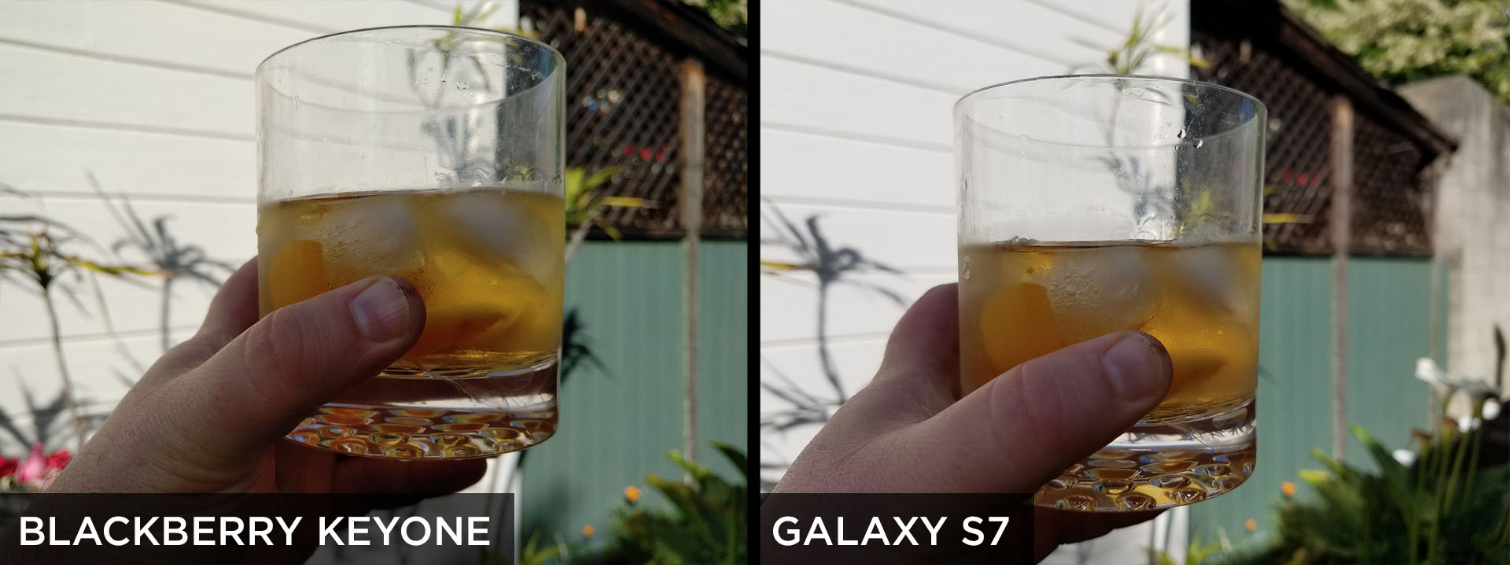
Likewise, the S7 takes a better shot of a rose in my garden. The petals stand out more in its shot, while the focus on the KeyOne isn't as sharp.
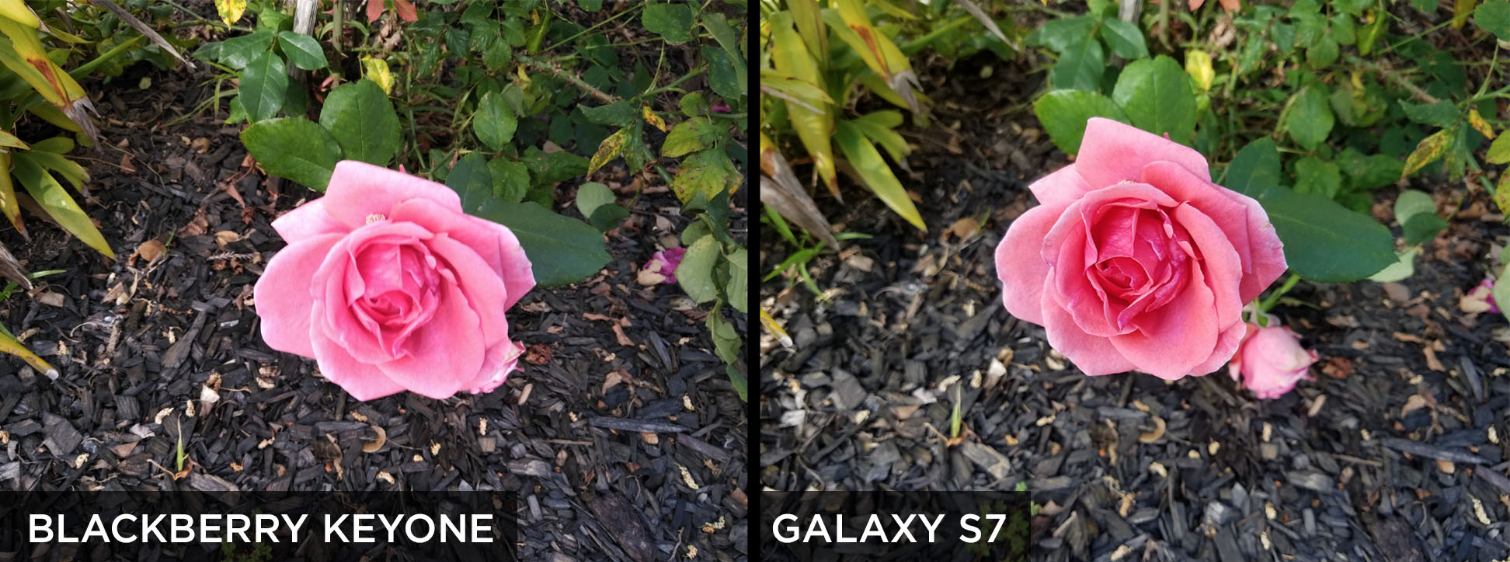
A photo of the miniature baseball hat collection I've stashed in a dark corner of my office really gives you a sense of how the S7's dual-pixel camera excels in lower light. The outlines of the hats are clear in the S7's shot and less distinct with the KeyOne. That said, the BlackBerry phone did a pretty good job capturing red-colored helmets, despite the challenging light.
MORE: Best Smartphone Camera
Up front, the KeyOne offers an 8-MP selfie cam, which does a pretty decent job of picking up details on your subject's face. I shot a picture of me and my daughter in an unlit room at dusk, and despite some issues with shadows, you can spot bits of stubble on my face, while my daughter's skin looks nice and smooth.
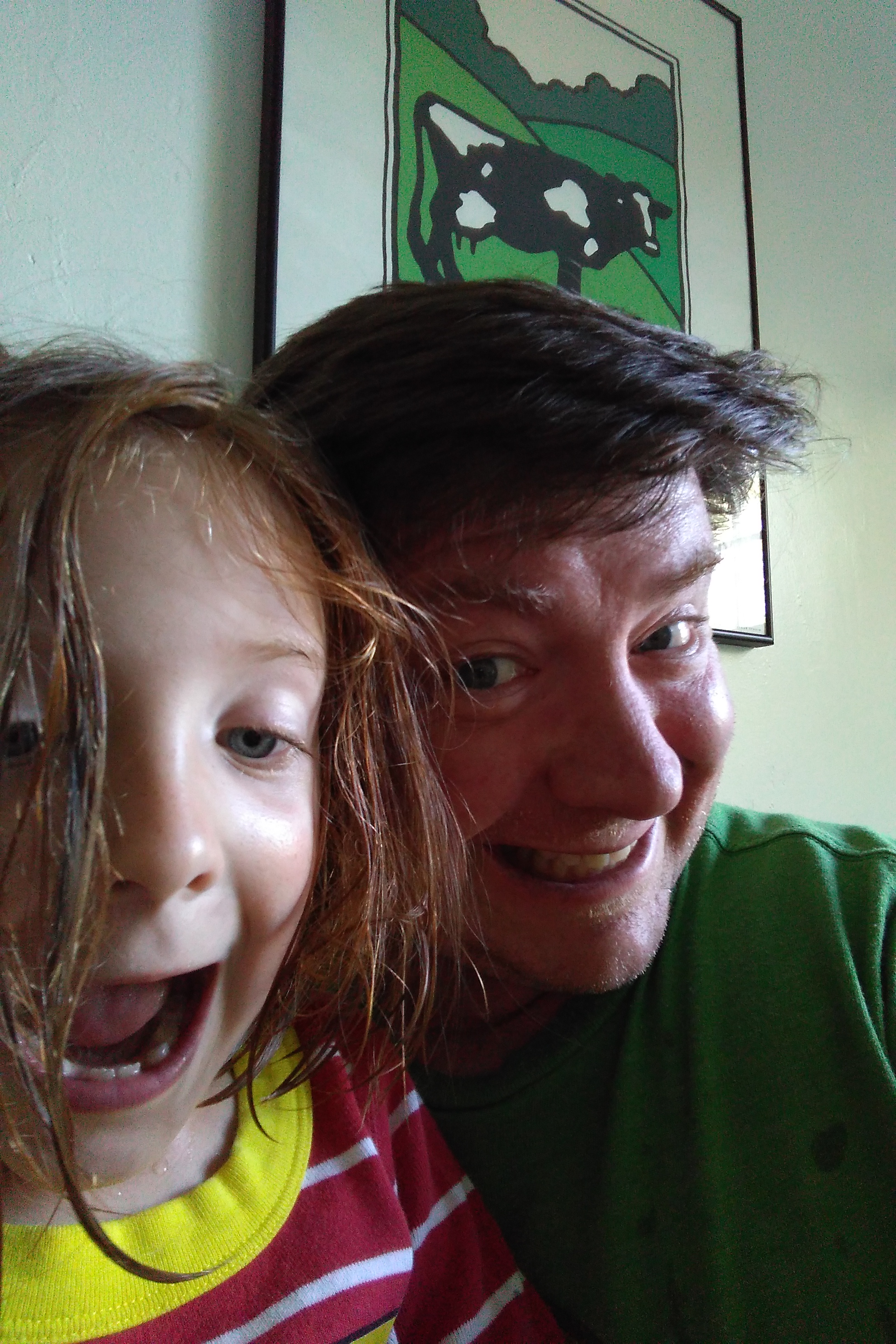
The greens on the poster behind us also stand out, even if my green T-shirt gets lost a little bit in the shadows.
Battery: All Day and More
If the processor and camera on the KeyOne don't exactly seem like what you should expect from a $549 phone, the battery in this BlackBerry more than picks up the slack. The KeyOne lasted 12 hours, 47 minutes on the Tom's Guide battery test, which involves continuous surfing over T-Mobile's LTE network.
That's more than 3 hours longer than the average smartphone, and an hour-and-a-half better than both the Galaxy S8+ (11:04) and Pixel XL (11:11). In fact, the BlackBerry KeyOne is the third longest-lasting smartphone we've tested in the last two years, bested only by the Moto Z Play and LG X Power.
MORE: Longest-Lasting Smartphones
When the battery does run down, you can also expect to recharge fairly quickly, as the KeyOne supports Qualcomm's Quick Charge 3.0 feature. TCL promises a 50 percent charge in roughly 30 minutes, and my testing seemed to bear that out. I plugged in the phone when its battery indicator was at 17 percent. After a little less than an hour of charging, that number climbed to 79 percent.
The KeyOne also offers a Boost mode for those times when you don't have an hour to charge up your phone. Plug in the phone, select the Boost option and TCL says you'll get more efficient charging, which can add a little extra juice to your phone.
Availability
The BlackBerry KeyOne comes in both GSM and CDMA versions, meaning you'll be able to use it with almost any carrier in the U.S. (You will need to make sure you buy the right version depending on which carrier you use — GSM for AT&T and T-Mobile, for example, or CDMA for Sprint or Verizon.)
You can buy the phone unlocked from either Amazon or Best Buy. TCL says additional carrier availability will start in the summer.
Bottom Line
If you yearn for a phone with a physical keyboard, you're going to be drawn to the KeyOne, regardless of any other features.
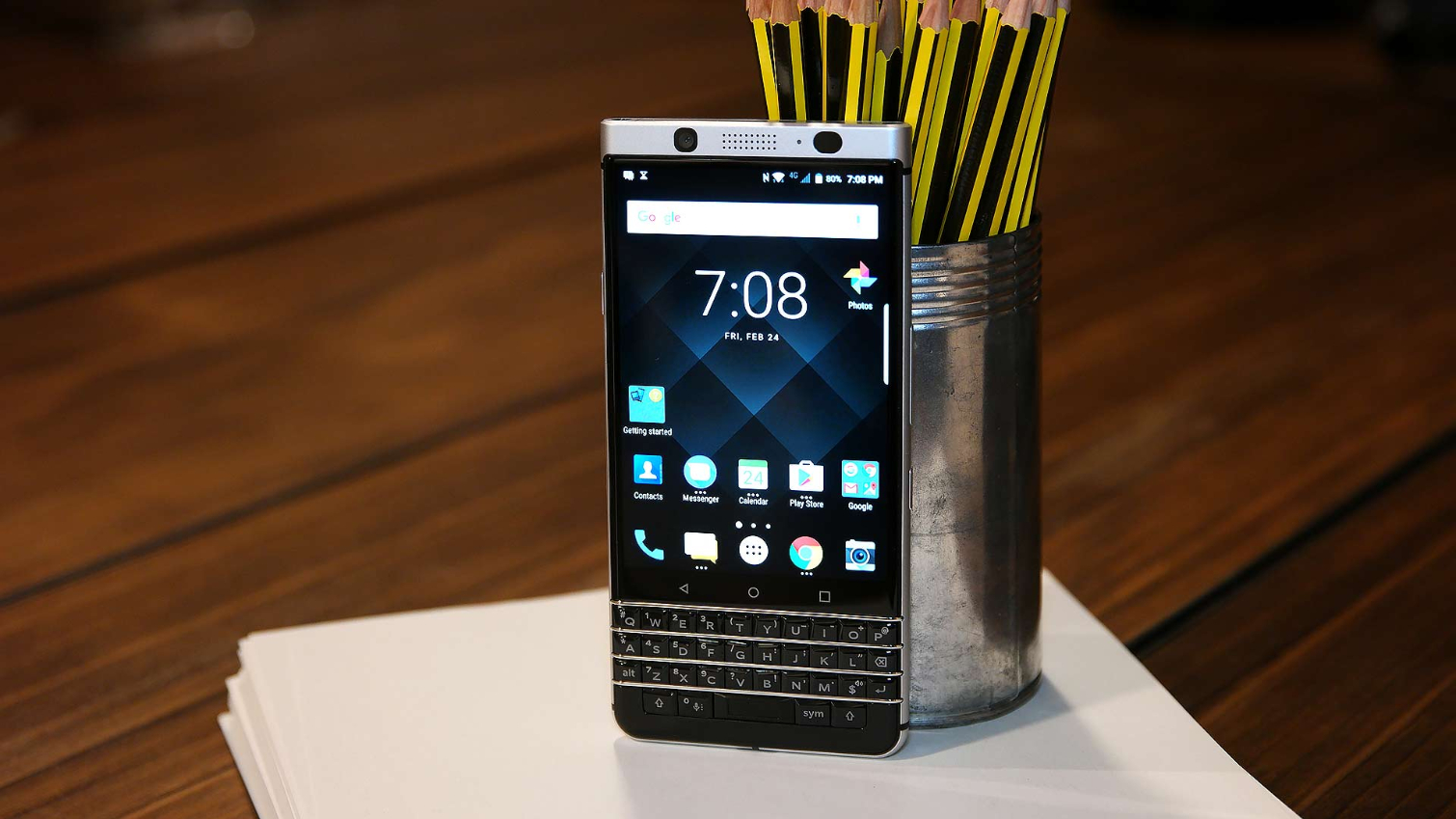
It's fortunate, then, that TCL has done such a good job building extra functionality into the keyboard and throwing in a long-lasting battery that won't force you to look for an electrical outlet just when you need the phone the most. A $549 price tag will be hard to swallow, especially when lower-cost, unlocked Android phones can match the KeyOne's performance. But the combination of BlackBerry software and hardware that makes you more productive can't be overlooked.
Philip Michaels is a Managing Editor at Tom's Guide. He's been covering personal technology since 1999 and was in the building when Steve Jobs showed off the iPhone for the first time. He's been evaluating smartphones since that first iPhone debuted in 2007, and he's been following phone carriers and smartphone plans since 2015. He has strong opinions about Apple, the Oakland Athletics, old movies and proper butchery techniques. Follow him at @PhilipMichaels.
-
jfalkingham Great write up! I'm looking forward to its release in the states later this month. I have an iPhone 7 but still find myself using my BlackBerry classic for all of my work and the iphone just for the apps. The BlackBerry calendar is light years ahead of anything on any platform. You can actually create and modify repeating meetings without fear of it breaking. Give me this keyboard, Android 7.1 for apps and the BlackBerry calendar and I'm good to go!Reply
